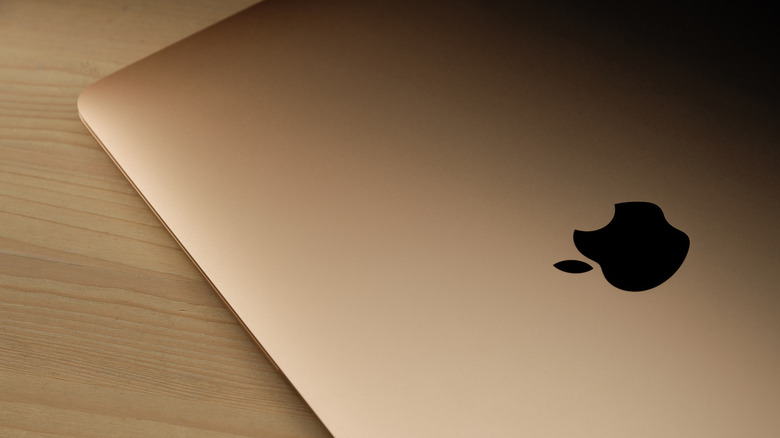How To Use Two (Or More) External Monitors With A MacBook Air
We may receive a commission on purchases made from links.
For many people, multi-monitor setups can be a godsend for productivity, especially for users who struggle with standard-sized laptop screens like the MacBook Air. With the extra screen real estate, you can view more things simultaneously, which can improve your workflow because it makes it possible to work on multiple things without the hassle of frequently switching between apps. For some professions, like audio engineers or video editors, this can mean being able to refer to storyboards or scripts, while working on their main editing software of choice. On the other hand, dual (or even more) external displays can be useful for your personal needs as well, because you can stream content while browsing social media or shopping online at the same time.
Previously, we discussed everything you need to know to set up dual monitors on your Mac. However, it's quite surprising that Apple doesn't always support the use of multiple displays on some of their MacBook models. Despite its premium price point, MacBooks have a lot of major limitations that we've discussed before, including limited hardware upgrades, repairability, and software compatibility. Specifically, Apple has made a lot of compromises to get the sleekness of its MacBook Air, such as the type and number of ports it has, which also affects the number of external displays it can manage. If you're eager to try the multi-screen life with your MacBook Air, here's what MacBook Air models support multiple monitors and what workarounds you can do if yours doesn't fit the bill.
Which MacBook Air models support multiple monitors?
To determine which MacBook Air models allow two-monitor support, you need to check what kind of ports your particular model has. While other Mac devices offer a variety of display ports, like HDMI, the MacBook Air has only historically offered the Mini DisplayPort, Thunderbolt/USB 4 (2020 onwards), Thunderbolt 3 (Intel-based models, 2018 to 2020), and Thunderbolt/Thunderbolt 2 (2011 to 2017). These days, the latest MacBook Air models usually only offer Thunderbolt 4 or USB-C ports.
Apple confirms that any M1 Chip-based MacBook, including the M1 MacBook Air, can only support one external display. On the other hand, MacBook models with Thunderbolt 3, like the older MacBook Air versions, may be able to connect a single display to each port. Alternatively, an easier way to check your Mac's video display capabilities is by clicking the Apple icon in the upper-left corner of your screen and selecting System Settings. In the menu bar, click Help > MacBook Specifications. Then, on the webpage that opens, scroll down to read the Display Support section for more information.
According to Apple, its M3 MacBook Air models have the built-in capacity to manage up to two external displays. However, it's important to take note that your M3 MacBook Air can't run both of them at the same capacity, as only one display can support up to 6K resolution at 60Hz, and the other can only support up to 5K at 60Hz (or 4K at 100Hz).
How to set up a MacBook Air with two monitors
When using your MacBook Air M3 with two external displays, it's important to note that it's only possible if the lid is closed and in "clamshell" mode. Because of this, you'll effectively only have a maximum of two displays at a time. This means you'll need an external keyboard and trackpad or mouse, since you won't be able to use the one on your MacBook Air.
To be able to use two monitors with clamshell mode, your MacBook Air also needs to be running on at least macOS Sonoma 14.3. Apart from making sure your MacBook Air is plugged into a power source during this time, you'll need to adjust some battery settings. To do this, simply click the Apple icon in the upper-left corner of the screen and go to System Settings > Battery. In the lower-right corner of the System Settings window, select Options, turn on Prevent automatic sleeping on power adapter when the display is off, and click Done.
Once you're all set, you can proceed to connect the first display to your MacBook Air via cable. In some cases, you may need to purchase an adapter or a dock to be able to do so. In the Apple Store, you can purchase some common external display adapters like the USB-C Digital AV Multiport Adapter ($69) or the USB-C VGA Multiport Adapter ($69). Next, close the MacBook Air and then attach the second display. But what do you do if you need two external displays on an M1 MacBook Air or even more than two on any MacBook Air?
How to set up multiple monitors with your MacBook Air
While not all MacBook Air models let you use more than one external display, there are some unofficial solutions you can try, such as using a docking station that supports multiple monitors. One popular dock that can make this happen is the BenQ beCreatus DP1310 USB-C Hybrid Dock ($299), which is compatible with most MacBook Air models (Intel-based, M1, and M2). Although the price can feel a little high, the dock can also fast charge your laptop (100W), add an Ethernet port, and offers a slew of other ports for your other needs.
When outputting for two to three screens, the BenQ beCreatus DP1310 can display up to 4K resolution at 60Hz, which is more than enough for the average user. For this to work, you'll also need to download and install DisplayLink before you get started. Then, connect your MacBook Air and the external displays to your port and click the circular button on the beCreatus DP1310 to proceed.
Alternatively, there are cheaper options available, like the TobenOne DisplayLink Docking Station ($219.99), which can also support a maximum of three external monitors for Mac devices. Apart from sharing similar ports as the BenQ beCreatus DP1310, the TobenOne also has an SD card slot, as well as a slightly higher power output at 120W. In the past, we've also discussed another way you can connect up to five external screens on your MacBook Air using a DisplayPort hub as well.
Potential issues when using unofficial methods for multiple external monitors
Previously, we've talked about all the things you can do if your Mac isn't detecting your external monitor. Unsurprisingly, many of these issues can also affect your MacBook Air when you're trying to hook it up to an external display, whether using official or unofficial methods. In some cases, you can resolve your external monitor issues just by cleaning the ports, inspecting the cables for damage, restarting your laptop, or updating your Mac's operating system.
That said, if you've used unofficial solutions to connect your MacBook Air to more than the intended number of maximum external displays, there are a couple of things that you need to keep in mind. Although there have been increasingly effective dock options released each year, not all dock options will be able to provide your ideal refresh rates. If you're a gamer, this might lead to some unwanted deaths due to lag issues.
Second, as many others have reported, you may be affected by Digital Rights Management (DRM) restrictions, which means you'll struggle to watch content from some of your protected streaming sites. Lastly, you may encounter issues with the stability of the connection, which can be a frustrating experience for anyone. But if you're eager to add another screen without the headache, you can opt for other solutions like using your iPad via Sidecar as an extra monitor instead.




